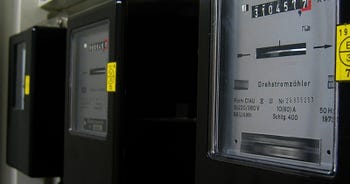An easy guide to non-commodity costs & the energy triad period
Running a business can be tough but throw in the winter period and the ever-rising cost of energy bills and it gets even harder.
With ‘Triad season’ upon us once again and non-commodity costs frequently increasing, it begs the question: what impact do they have on your business bills and how can you make savings?
With this helpful Bionic guide, we’ve broken down everything you need to know about non-commodity costs and the Energy Triad period to get you up to speed.
What are non-commodity costs?
Non-commodity costs are typically costs that originate from a third-party — such as the government — which are then passed on to your energy supplier, and finally, are passed down to you in your bills.
The total amount that you’ll pay for your energy can be broken down into three separate charges:
- Wholesale price — This is the cost of the power that we use (also known as the commodity).
- Cost of power supply — This includes the cost of power lines that supply energy to homes and businesses.
- Fees and taxes — A variety of taxes and fees from the government.
In simple terms, the non-commodity charge is calculated by dividing the sum of energy provided to the nation by how much we use. The higher the demand, the bigger drive we’ll see in wholesale prices. Supply and demand has been a major part of the energy price rises we've seen across 2022. However, businesses may face higher non-commodity as the country moves toward net zero.
Put simply, net zero refers to the balance between the amount of greenhouse gases that are produced with the amount that’s removed from the atmosphere. We’ll reach net zero when the amount that we add is no more than the amount that’s taken away.

Costs of your bill explained
Most likely, you’ll see a wide range of charges on your business energy bill. Here we’ll break down some of the most common ones you’ll find:
Transmission Network Use of System (TNUoS)
Transmission Network Use of System — also known as TNUoS, for short — recovers the cost of installing and maintaining the transmission of electricity from power stations to grid supply points across systems in England, Wales, Scotland and offshore.
Renewables Obligation (RO)
The Renewables Obligation (RO) is designed to ensure licensed electricity suppliers in the UK source an increasing proportion of their supply to customers from renewable sources.
The RO came into effect in 2002 in England, Wales and Scotland, followed by Northern Ireland in 2005.
Distribution Use of System (DUoS)
When looking at your electricity bill, you may notice a charge for ‘Distribution Use of System’, otherwise known as DUoS. It covers the cost of installing and maintaining the local electricity distribution networks and you’ll pay it in addition to your kWH unit charge.
Contracts for Difference (CfD)
The Contracts for Difference scheme (CfD) is the government's main action for supporting low-carbon electricity generation.
The aim is to incentivise investment in renewable energy by providing developers of projects with high upfront costs and long lifetimes which, in turn, offers direct protection from volatile wholesale prices. It also aims to protect consumers from paying increased support costs when electricity prices are high.
Balancing Service Use of System (BSUoS)
The BSUoS charge helps to recover the day-to-day costs of operating the transmission systems.
Generators and suppliers are liable for these charges, which are calculated daily as a flat tariff for all users. A monthly forecast is provided to all, however, the BSUoS charge will depend on the balancing actions that have to be taken daily, so the prices you’ll see on your bill can fluctuate.
Capacity Market (CM)
The Capacity Market is designed to support the development of more active demand management in the electricity market. In short, its aim is to ensure the security of the electricity supply by providing a payment for reliable sources to deliver energy when it’s needed.
Feed-in-Tariff (FiT)
Introduced on 1st April 2010, the Feed-in-Tariffs scheme was designed by the government to promote the uptake of low-carbon and renewable energy generation.
The scheme requires participating licensed electricity suppliers to make payments on electricity that’s degenerated and exported by accredited installations.
Eligible installation that uses one of these technology types can apply for the accreditation:
- Wind
- Solar photovoltaic panels (Solar PV)
- Micro combined heat and power (Micro CHP)
- Hydro
- Anaerobic digestion (AD)
Line losses
Line loss refers to the quantity of electricity that’s lost during transmissions and distribution across the electric grid.
Because the utility supplier must purchase enough energy to cover the estimated cost of consumption — including the line loss amount — this loss gets divided and is then passed on to customers.
What are transmission and distribution costs?
Trying to build and maintain a network of cables, transformers and pylons is no easy feat — and it comes at a cost.
These transmission and distribution costs will vary from provider to provider, but it largely depends on the type of power plant that’s supplying the power to your source, who is then supplying it to you. This is because there must be a constant supply of power flowing through the network that prevents power cuts or damage, so your bill could be priced differently each month to reflect this.
What is the Energy Triad period?
To manage the huge influx of demand on the network during the most energy-intense period of the year – usually between November and February — the National Grid imposes a charge.
This charge — which is known as the Transmission Use of System (TNUoS) charge — is used to maintain the UK’s electricity grid to ensure future supply, with the charge being based on your business’s energy consumption during the ‘Triad’ period.
Essentially, triads occur when high business demand meets the domestic mid to late afternoon tea-time period, which causes a spike in the amount of energy that’s being used at one time.
How do Triads impact your business energy bill?
Triad periods impact businesses with half-hourly meters, as the charge is proportional to a business's energy use during the three half hours of the highest demand (the Triad period). This typically runs from 5:00 pm to 6:30 pm every day from November to February. This is also linked to a business's location, as where you operate and which grid supply point you’re on can impact how much you’ll pay.
If a business doesn’t consume electricity during the three Triad periods, then it won’t have to pay for half-hourly TNUoS charges. However, for some businesses, this simply isn’t possible.
Why should businesses care about Energy Triads?
Once you receive your bill, you should see a specific TNUoS charge applied, based on the amount of energy that you used during the Triad period.
Essentially, if it’s possible to not run your business during the hours of 5:00 pm - 6:30 pm, you’ll help to minimise consumption and lower your bill when the TNUoS is applied.
However, it’s important to remember that the TNUoS charge only forms a part of the non-commodity cost on your bill, with other distribution costs still having to be paid for.
How are the Energy Triads changing?
Over time it’s become harder to predict when the Triad period will occur because businesses are trying to avoid them.
The changing nature of the UK’s decentralised energy system means that the cost of maintaining and operating them is at an ever-increasing high. Owing to this, the Triads are expected to be replaced by a system called Targeted Charging Review (TCR) which will charge users based on the size of their capacity agreement with the National Grid. This is set to come into force during the winter of 2023/24.
Get help with your energy bills from Bionic
At the end of the day, we all want to save money where possible but the rise in energy bills is making it increasingly harder to do so. Get in touch today with the Bionic team to discuss your needs or get more information on business energy, business electricity or business gas today.








